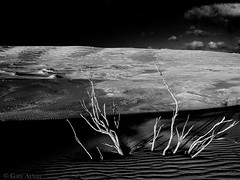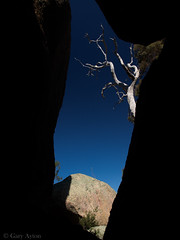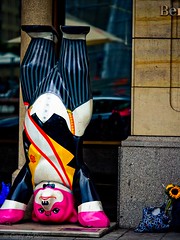2018 was the year the major camera manufacturers got serious about full frame mirrorless cameras, and yes, they are the future of photography instead of dSLRs because that is where the greatest technological improvements can be made thanks to the full time use of the sensor and the electronic viewfinder.
But which camera system should one buy into?
This is not an easy choice because buying into a system will make it expensive to swap systems later if you find it doesn’t suit your needs, and none of the current offerings are ideal tools.
The camera needs to become a seamless extension of the photographer’s “performance” and provide a comfortable, ergonomic and efficient mechanism to achieve their goals.
The camera system needs to have all the lenses and capabilities that the photographer is likely to need – although this will vary for individual photographers.
Sony has the most mature native system at present thanks to their head start of some years over Canon and Nikon with Canikon users needing to rely upon legacy dSLR lenses to address current needs. Panasonic is the new boy on the block for full frame and although there are some expensive Leica lenses available and Sigma will be joining their lens mount system, users will have to wait some time before this system matures.
Can I love the Sony system?
I come from decades of using Olympus gear and a Canon 1D Mark III pro sports dSLR, and when I bought a Sony a7II camera a year or so ago because it was cheap and I could use my Canon EF lenses on it, I have had quite some time to play with it and try to like it.
Frankly I hate using the Sony a7II – but perhaps the Sony a7III has addressed all my issues – but it seems it has only addressed some of them.
Sony seems to have accidentally created their full frame system, they created the APS-C cropped sensor NEX camera system and then realised that they could actually squeeze a full frame sensor into the same lens mount and camera size – a pretty cool feat indeed!
BUT, the lens mount system is not really optimised for full frame sensors as it is a touch too small which may cause some future lens design and sensor IS issues, and at present they have persisted with the same camera size for their a7 series which is TOO SMALL to comfortably hold the required larger, heavier full frame lenses.
I can get past the poorly conceived Sony menu system, but not the poor camera ergonomics.
Even with my small hands, my 5th finger falls uncomfortably below the bottom of the grip which is also not as deep as it could be, while the thumb on the rear feels unstable and it is actually difficult to rotate the quite stiff rear dial with your thumb holding the camera one handed.
Sony needs to take a leaf out of the Olympus camera designs
Now Olympus have not always had the best designs for ergonomics.
The revolutionary OM film cameras were amazingly small and light when compared to the behemoths of the day, but they had no ergonomic grip built in as these cameras did not have image stabilisation nor autofocus so the user was expected to use a two hand approach to address this and as such a grip was not needed.
Enter the digital SLR world and Olympus experimented with many grip designs over the years, including the downright ugly E330 which I owned and then the much improved E510.
Then Olympus changed the mirrorless world with their fantastic compact OM-D E-M5 which was beautifully designed for using with the initial compact lenses but did require an extra grip for the larger lenses and this extra grip proved to be a weak point.
But now they have evolved to the Olympus OM-D E-M1 II which for me gets close to the perfect feel of a camera in the hand, even with larger lenses.
Why can’t Sony make their a7 range a touch taller with a deeper grip and a thumb and dial control similar to the E-M1 II, plus throw in a swivel LCD and I think I would actually love their system – for one can’t fault their class leading sensor image quality nor their class leading AF tracking capabilities in their version III cameras.
That said, they should not follow the Olympus On-Off switch position veing placed on the left side which requires two-handed operation (this harks back to their OM film SLR designs but is not ideal now) – this is one area where Sony has probably got it right – put it on the shutter release button.
What about the new Canon R series?
This is a difficult one for me because I have lots of pro Canon EF mount lenses and would love to use them on a Canon mirrorless full frame camera.
The current cameras (both are consumer level quality only even the Canon RP) do not address my needs – in particular, they are now the only full frame mirrorless cameras without sensor based IS. Canon has introduced some controversial user interface controls which we will have to wait and see how they pan out, and they are not weathersealed, nor do they have dual card slots, nor do they have a fast burst rate or silent electronic shutter mode, and the video capability is crippled. They even crippled their USB-C port to only USB 2.0 speeds – really Canon?
I do like the new RF f/1.2 prime lenses as these bring for the first time to full frame, fast, accurate AF with very high image quality wide open for lenses such as these – but they are very expensive indeed!
Their list of native lenses is very much early days so we will need to wait and see how this matures and if Canon decides to add IBIS in to their cameras.
The Nikon Z series?
These look very promising although their AF tracking is not quite up there with Sony yet, and perhaps more troubling is their initial native lens line up decisions. The burst rate with Live View update, AE and AF is limited to 5.5fps and the buffer is very limiting for sports or wildlife.
For me they are not on my plans given my Canon EF lenses would unlikely to be able to be used well on them even if an adapter came out.
That just leaves the Panasonic S system.
This looks like it will be a fantastic system, but it will be big, heavy and expensive – everything that I try to avoid.
Where does that leave me?
Waiting for Canon to add IBIS and add some proper features, or Sony to fix their camera ergonomics and add in a swivel LCD screen and make them as comfortable, as weathersealed, and as capable as my E-M1 II.
Or perhaps Olympus will show them all how to design a full frame mirrorless camera properly – but I doubt they will waste money venturing into that competitive world with a falling market.
For my needs at present, the Micro Four Thirds system is the most optimal in terms of weight, size, image quality and cost – I wont be taking my Sony a7II and large, heavy Canon EF lenses on my overseas holidays.
Perhaps I will skip full frame and supplement my Micro Four Thirds go anywhere system with a medium format mirrorless system such as the Fujifilm GF system – although I really can’t see myself getting much benefit from it.






















